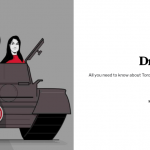A look inside the Ryerson Review of Journalism’s 30th anniversary issue
Stephanie Maris is the editor of the Winter 2013 issue of the Ryerson Review of Journalism. Here, she talks about what it was like heading the masthead of an esteemed student-published journalism magazine, what we can look forward to in the upcoming issue, and how the RRJ is celebrating its 30th anniversary.
Stephanie Maris is the editor of the Winter 2013 issue of the Ryerson Review of Journalism. Here, she talks about what it was like heading the masthead of an esteemed student-published journalism magazine, what we can look forward to in the upcoming issue, and how the RRJ is celebrating its 30th anniversary.
By Stephanie Maris
The Rogers Communication Centre, a modern building in the heart of Ryerson’s campus dedicated primarily to journalism studies, was unusually silent. In mid-December, most students are at home studying for exams, or out celebrating the start to the holiday season. Not so this editor: I was on my way to the magazine-editing suite fondly nicknamed “the fishbowl” (and later, less fondly described as the source of “fish fever,” a stress-induced illness that took over my masthead during the craziest weeks of final production).
On that December afternoon, however, I was delighted to set foot in the little classroom that had been my world nearly seven days a week for the past four months. At long, long last, the fishbowl was lined with boxes filled with our opus: the Winter 2013 edition of the Ryerson Review of Journalism. We had done it, and everything had been worth it.
When I was offered the position of Editor, my instructor, the esteemed Stephen Trumper, warned me that it would come with its challenges and its rewards. Production lived up to both sets of expectations, and I learned that the role of an editor is often more cheerleader/listener than writer/reader.
[node:ad]During the most stressful weeks, our world was made up of sleepless nights, 12-hour days, exhausted peers and strained humour. But even then our masthead persevered, and, fueled by excessive trips to Starbucks, horrible, laugh-inducing title suggestions, and sugar (the secret to every successful meeting), we managed to band together and become friends as well as colleagues.
I learned a new respect for the work ethic of my peers, and for the talent contained within this program. I have always admired the depth of the research and reporting that goes into the RRJ, but to follow our masthead’s stories from idea to final copy was both fascinating and inspiring. And I know that every editor is bound to say that hers is the best issue yet — but that’s simply because it’s true.
We dedicated ourselves to every detail of this magazine, from how to properly commemorate the RRJ’s 30th anniversary, to what we wanted on our cover. Our vote to settle on Dishonoured, a feature about honour-killing coverage by our writer and Visuals Editor Hafsa Lodi, was unanimous. Her passion for the story, along with the work that went into her research, is a shining example of what our issue is about: the stories that we believe the journalism industry needs to read.
When I arrived in the fishbowl I immediately isolated myself with a new copy (and there’s nothing like that fresh-from-the-printers smell). In my quiet corner, I read the issue from start to finish. After the rigorous fact checking, copy-editing, and copy editing processes, each one of us could quote every story verbatim, but that first read allowed me to savour each story with fresh eyes. And they’re good. Very good, and filled with the determination and hope that I believe is unique to a masthead of graduating students eager to join the ranks of their working peers.
For this reason (and with no bias whatsoever) I am delighted to be nudging you, fellow journalists, towards newsstands to pick up your copy of our hard work. I also encourage you to visit rrj.ca to read some of our additional pieces and painstakingly edited multimedia stories. We are so proud to be sharing our writing with you that we have taken advantage of every platform we could get our hands on.
In 30 years, I look forward to rereading the issue that began my career as an editor. I know that by then my masthead will have gone on to do amazing things, and will likely feature in many of the future issues of the Ryerson Review. For now, it is my pleasure to introduce you to your future colleagues, and to anticipate the next chapters of the journalism industry that we will write together.





